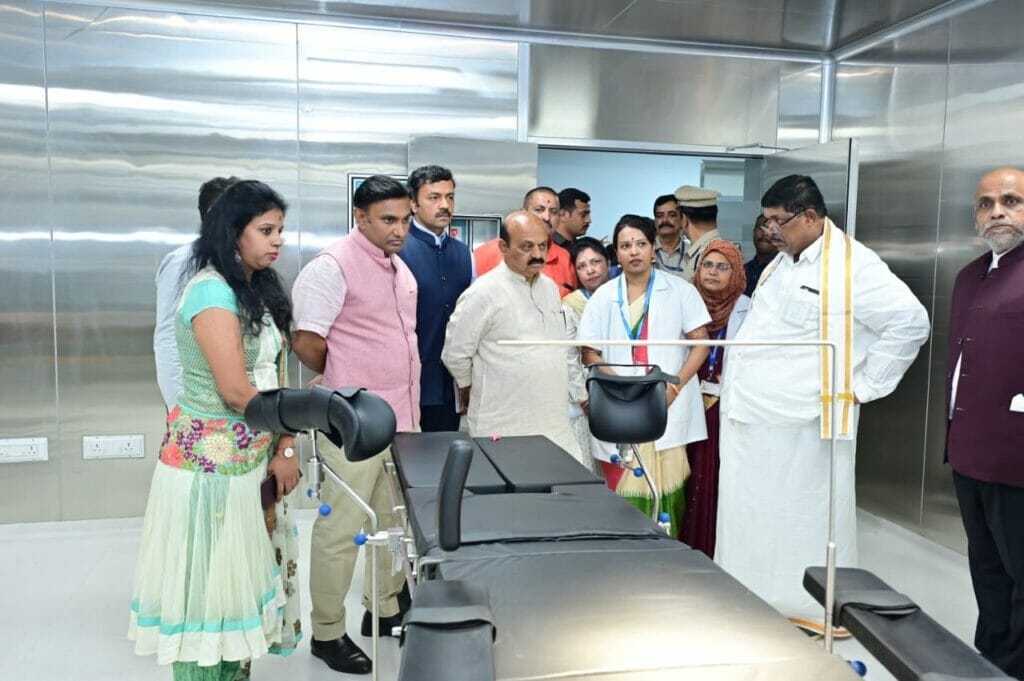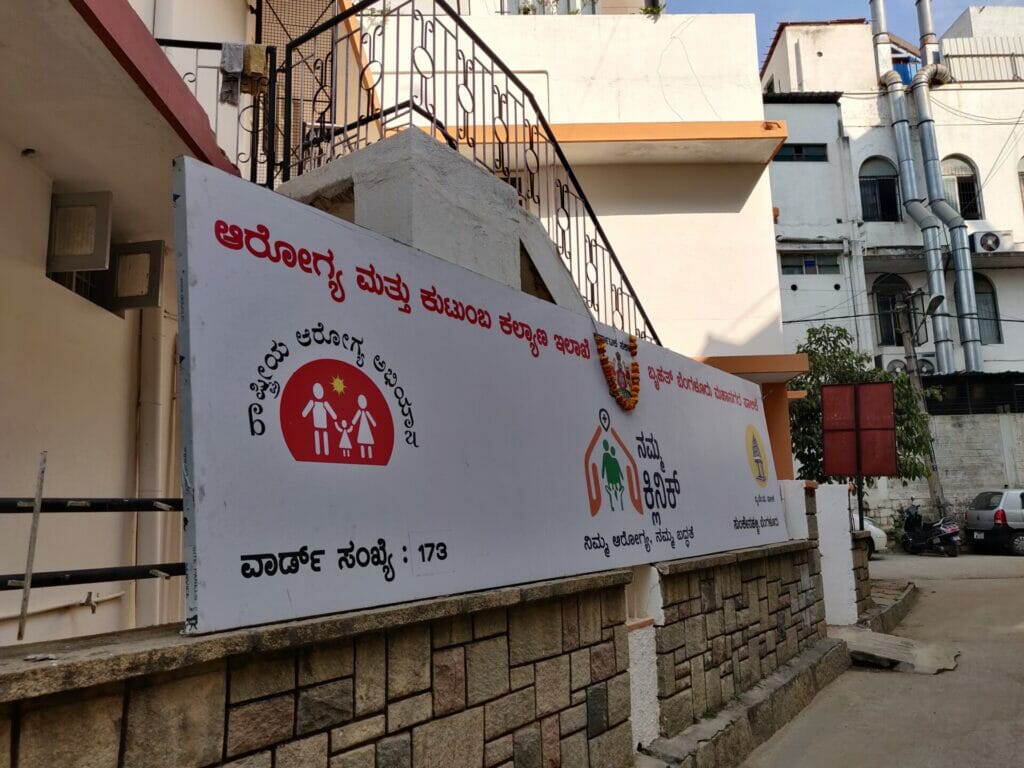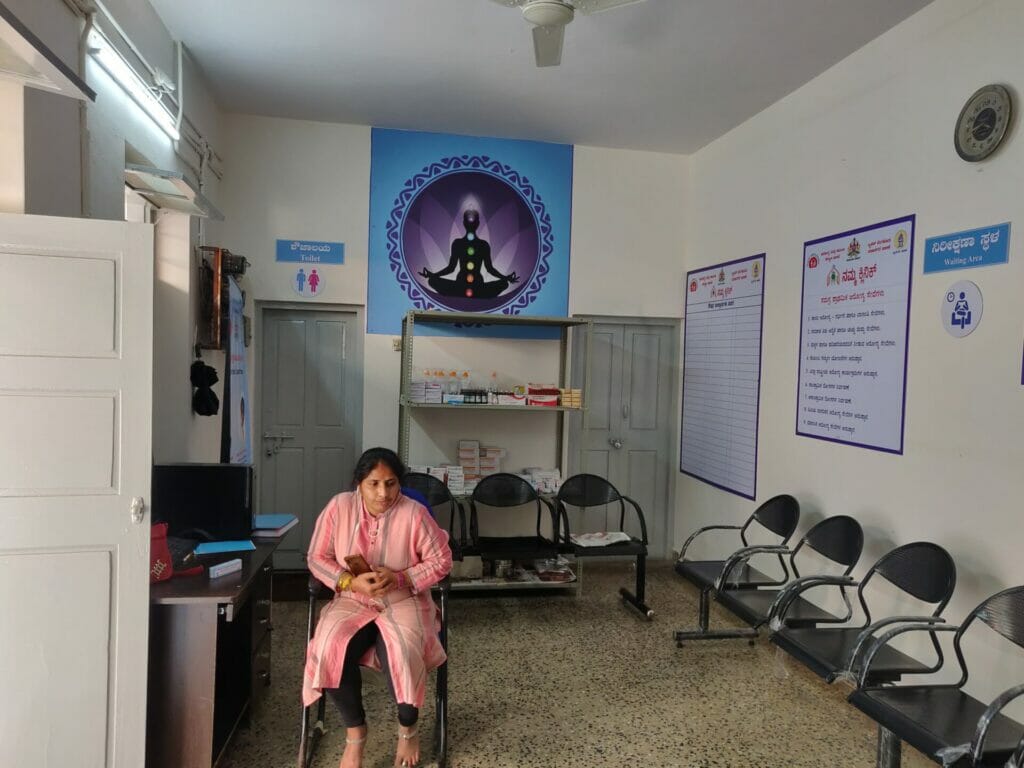After delays in the opening of Namma Clinics, Chief Minister Basavaraj Bommai, on February 7th, inaugurated 108 clinics within BBMP limits. Bommai launched the Namma Clinic in Mahalakshmipura ward, and the other 107 clinics were launched virtually.
The state government announced the setting up of Namma Clinics or Urban Health and Wellness Centres (U-HWCs) , last year, to decentralise primary healthcare. The aim of Namma Clinics is to make basic medical services and infrastructure easily accessible and affordable for low-income households or communities. In the spirit of this, the Government of Karnataka flagged off the setting up of Namma Clinics.
In November last year, Citizen Matters reported on the setting up of a model primary Namma Clinic in Mahalakshmi layout that promised basic healthcare services. The state government announced the plan of setting up 243 such clinics in each of the city’s wards. This was part of state Minister for Health Dr K Sudhakar’s announcement of 438 clinics in the state.
“We have opened 108 Clinics, where residents, especially the urban poor suffering from minor ailments, can avoid going to big, private hospitals. We offer them decentralised quality care, free of cost, ” Bommai said in an introductory speech during the inauguration of the clinic in Mahalakshmi Layout.
Gearing for a phased launch
While stating that the goal is to have a clinic in every ward, CM Bommai mentioned that the clinics will be started off in all 243 wards in the coming days. The launch of the clinics is being carried out currently in two phases says Dr Anusha HA, the medical officer at the Sunkenahalli (Ward 173) clinic.
“The ones in priority wards, which have the staff, have been inaugurated in the first phase. While the infrastructure for the rest of the clinics has been secured, they are in the process of finalising the staff for the clinics that will be operational in the second phase,” she says.

“Currently, the city has one public healthcare centre (PHC) for every 50, 000-60,000 residents, but with Namma Clinics, we aim to have one healthcare centre for every 15,000-20,000 people,” the health and family welfare minister, K. Sudhakar, said during his inaugural speech. He also announced that in a few days, the government will also be launching an Ayushmati clinic, specifically for women.
A novel approach
I visited the Sunkenahalli Namma Clinic. It is located in a residential layout, away from the arterial roads, which makes it difficult to locate. However, the newly inaugurated clinic has all the necessary equipment and medicines to tackle a barrage of patients, the staff nurse and medicinal officer on the premises confirm. This particular clinic is in close proximity to the GG Lions Urban Primary Healthcare Centre.

She says the primary aim of these clinics would be to provide medical aid to the urban poor or residents in informal settlements, so their health problems are not neglected. “If neglected at an initial stage, it has the potential to progress into something worse. If we could catch it at an early stage and refer them to higher centres for treatment, ” she says.
Dr Anusha also says this is referred to in the Fifteenth Finance Commission, which mentions that “every block in the country is envisaged as having a CHC/ Block PHC/ SDH at the Block Headquarter (HQ) which serves as a hub for a referral from the SHCs and PHCs of the block.
According to Dr Anusha, the clinics were based on the popular model of Mohalla clinics in Delhi, which are community clinics that offer basic healthcare services to underserved populations in urban areas. “The clinics were in each ward and it made medicines and diagnostic services easily accessible.”
Parallels between the two were also made by Aam Aadmi Party’s Atishi, accusing the BJP government in Karnataka of “copying” the electoral manifesto for electoral gains.
According to Dr Anusha, the urban primary healthcare centre (UPHC) here serves as the block headquarter, and each Namma Clinic is tied to a UPHC. Each clinic is equipped with a medical officer, a nursing staff, a lab technician, and a group-D employee. “We provide basic health services entailing just consultation or diagnosis, and medication covering infancy to elderly care,” says Dr Anusha.
Read more: Rs 155 cr already spent on Namma Clinics, but will it improve healthcare for the urban poor?
Sites for early intervention
“On the day we opened we only had four patients, but in the last two days we have seen over ten patients and we expect the numbers to increase, ” states Dr Anusha. She says most of them come to get their common cold or cough treated. The next most common treatment is for injuries in the form of cuts or bruises that daily wage workers come with.
The clinic is located close to Gandhi Bazar, the area whose road networks are currently being worked on, making construction labourers susceptible to injuries and bruises for which they need treatment.

Dr Anusha believes, once all the clinics are operational and they have a steady stream of patients, the clinics can serve as sites for regular diagnoses and early intervention. “We intend to catch non-communicable diseases like diabetes and hypertension early on, and ensure that our patients are routinely checked to ensure they are taking their medication, ” she adds.
Currently, BBMP has only released a list of 108 clinics that were inaugurated in the first phase. The list divides the clinics based on the assembly constituency and the BBMP zone they are located in.
However, there is a lack of clarity on the exact or the geo-tagged locations to easily find the said clinics. Also, as the stream of patients has been minimal there is also concerns over lack of awareness plans at the ward levels by the government. The chief health officer was unavailable for comment.
It remains to be seen if Namma Clinics is yet another poll promise ahead of the assembly elections, or a step in the direction of decentralising healthcare for Bengaluru with significant budgetary allocations for the same.
Namma Clinics services
Namma Clinics will operate from 9 am 4.30 pm, Monday to Saturday.
The clinics will provide 12 services, including antenatal, postnatal care, adolescent care, immunisation, family planning, fertility, communicable diseases management, general and minor injuries, preventive care for NCDs, oral care, eye care, ENT, mental health, geriatric care and laboratory services
Additional services include tele-consultation, referral services, and yoga.
According to health minister K Sudhakar, the state will spend Rs 138 crore to maintain staff every year.